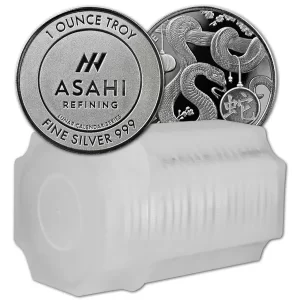Gold has always been a symbol of wealth, and for good reason. Throughout history, gold has been sought after for its beauty, scarcity, and ability to be shaped, melted, and alloyed into various objects. Gold is also incredibly durable and highly resistant to corrosion, making it an asset for many cultures and civilizations. But what truly sets gold apart from other precious metals is its unique chemical properties, which make it incredibly useful in a variety of applications.
What Makes Gold Unique?
Like many other precious metals, gold is a dense, silvery-white pigment. However, only one of these metals is not an organometallic compound. Moreover, gold is also the only precious metal that is used as a currency.
The Physical Properties of Gold
- Density: Gold has a density of 19.3 grams per cubic centimetre, which is relatively high for a metal. This makes it a good material for jewelry and coins, as it is heavy enough to be easily handled and has a high value per unit of volume.
- Malleability and ductility: Gold is a highly malleable and ductile metal that can be easily shaped and stretched without breaking. This makes it ideal for use in jewelry, where it can be moulded into intricate designs.
The Chemical Properties of Gold
- Elemental composition: Gold is a chemical element and is therefore composed of only one type of atom. It is considered to be a pure metal, with a chemical symbol of Au.
- Electrical conductivity: Gold is an excellent conductor of electricity, which makes it useful in electronics and other applications where electrical conductivity is important.
- Solubility: Gold is insoluble in water and most other solvents, meaning it does not dissolve in them.
Gold’s Uses in Modern Technology
- Electronics: Gold is used in a variety of electronic devices, including smartphones, computers, and televisions. Gold is also used in the manufacture of connectors, switches, and other components that require high electrical conductivity.
- Dentistry: It is often used in dental fillings, crowns, and bridges, as well as in orthodontic appliances.
- Aerospace: Gold is used in the aerospace industry due to its ability to reflect infrared radiation, which makes it ideal for use in satellites and other spacecraft.
- Medical equipment: Gold is used in medical equipment, such as X-ray machines and radiation therapy equipment, due to its ability to absorb X-rays and other forms of ionizing radiation.
- Jewelry: It remains one of the most popular materials for this purpose
Gold’s Role in History
Gold is one of the oldest valuable metals in the world. It is one of the earliest metals discovered by humans, and it is estimated that humans have extracted and smelt gold for 5,000 years. In fact, it is believed that the Egyptians and Mesopotamians used gold for high-value and decorative objects and jewelry. Gold was also highly coveted as a form of currency.
 Hi,
Hi,






















